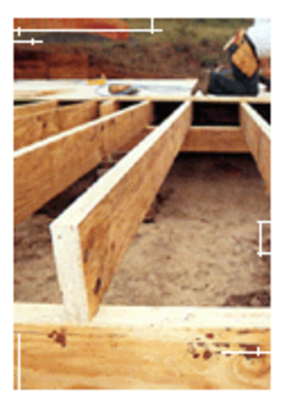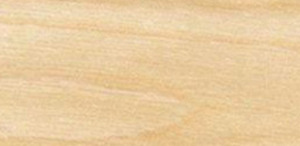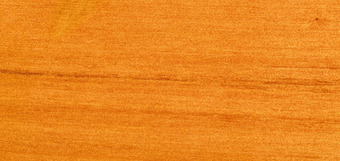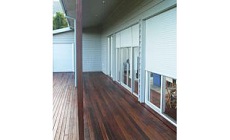
LVL
LVL is a versatile engineered product and combines the best of modern process technology with the aesthetic beauty of natural wood. It has been used structurally for several years in Northern America and in many European countries.
LVL is made up of parallel laminations of veneer, glued and processed together to form material of thickness similar to sawn timber. The distinguishing difference between LVL and plywood is the orientation of the veneer layers.
LVL represents a new technology in wood utilisation and its production is steadily increasing. LVL is a high-quality structural material with uniform engineering properties and dimensional flexibility, which makes it superior to sawn timber and glued laminated timber, particularly for large-span structures.
Applications range from public buildings, large prefabricated buildings, product components and industrial warehouses to customised wooden houses. New applications are constantly being developed in close co-operation with customers and wood-construction professionals.
In short, LVL provides an ideal solution when features such as durability, light weight, and dimensional precision are essential. These attractive features lead an ever-increasing popularity both in Europe and the United States.
Engineered lumber is enjoying increased market acceptance and is displacing solid-sawn structural timber. There are many reasons for the rising popularity of this engineered wood products.
Structural Properties of LVL
The most important reason for LVL's success is the qualities of the product itself and its properties. The manufacturing process provides LVL with a homogenous structure.
In LVL, usually the grain of each layer runs in the same (long) direction with the result that it is strong when edge loaded as a beam or face loaded as a plank.
This kind of lamination is called parallel-lamination, and it produces a material with greater uniformity and predictability than the same dimension material made by cross-lamination.
Cross-laminated LVL offers superior shrinkage properties perpendicular to the long direction of the board and increased strength properties if face loaded as a plank.
Appearance
The natural aesthetic beauty of sawn timber includes the appearance of knots, wane, resin pockets, splits, slope of grain, and a few other less significant defects. Some of these defects have a great influence in the optical quality of the sawn timber and can diminish the value of the sawn timber.
LVL offers a more uniform surface with nearly the same beauty of natural wood. Scarf-joints visible on the surface might be a problem that reduces the quality of the optical appearance if dark coloured resins such as PF-resins are used.
I Beam
I Beams are high-strength, long-span structural timber beams which are used for residential and commercial applications.They offer exceptional straightness, uniform depth and dimensional stability.
Economical to produce,the I Beam is made from a combination of timber products. The top and bottom flanges which make the distinct I shape,and are made from material with a high tension strength such as LVL or even graded solid timber. The flanges are separated by a vertical web, usually manufactured from structural plywood or oriented strand board (OSB). The centre of the section serves to transmit shear stresses, so a material with good shear properties is required.
The web and flanges create a lightweight beam which is both strong and durable. The flanges resist bending, tension and compressive stresses, utilising LVL's enhanced strength and stiffness properties. The web serves to transmit the shear stresses, relying on plywood's panel shear capacity and dimensional stability.
I Beams are generally not considered to be an appearance product due to the visibility of gluelines but can be finished accordingly for architectural and design applications.










